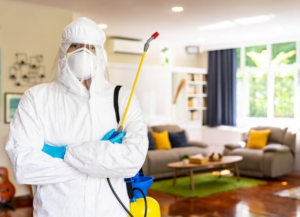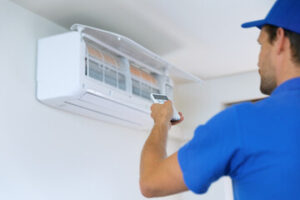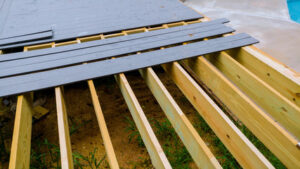
Workshop Aziendale is an ideal way to train your employees. It can help them better understand the complexities of their work and provide them with practical tools for success. However, it is important to define clear goals from the beginning to ensure that the workshop meets its intended objectives.
Employee onboarding
Employee onboarding is the process of introducing new employees to their roles and responsibilities at your company. It is a vital part of employee engagement and helps them become productive and confident in their new role. It also helps your new hires form social connections with their colleagues. It is different from orientation and involves a series of standardized events and milestones. It usually lasts a few weeks or months, but may even extend for several months after an employee starts their new job.
The first step of employee onboarding is providing comprehensive information about policies and benefits. This includes the company’s compliance forms, as well as insurance, tax, and leave policies. Then, you must assign the employee a supervisor and a mentor to help them get started in their role. This will allow the employee to develop a comfort level with the company’s culture and policies.
During the onboarding process, it is important to encourage a positive attitude and support teamwork. The best way to do this is by arranging introductory meetings with key departments, including those they will partner with in their work. It is also helpful to have an informal 30 day check in with the new hire to address any immediate concerns and ask for feedback.
You can also use an onboarding workshop to teach your team about collaboration and fostering diversity in the workplace. By pairing members from different departments and backgrounds, this workshop will help them understand each other’s perspectives and improve teamwork and collaboration. This will make for a more cohesive and inclusive team. Additionally, it can be beneficial to take these workshops offsite, as this can spark creativity and increase bonding in ways that an office can’t.
Strengths finder
A well-designed corporate workshop provides immense value for businesses of all sizes and industries. They promote team-building and collaboration, increase employee satisfaction, and help companies grow. In addition, workshops allow employees to learn critical skills and strategies in an interactive environment. They also offer a safe space for employees to experiment and make mistakes, which leads to more effective learning.
A strengths finder workshop is a training session that helps participants identify their unique strengths and talents. It also teaches them how to use these strengths in their daily work and personal lives. In addition, it gives them tools to build more successful relationships. The workshop aims to help people develop a more positive mindset and a more effective leadership style.
Some corporate workshops focus on specific skills, from software mastery to leadership finesse. These training sessions offer a hands-on approach to learning and are tailored to the needs of each company. They provide opportunities for employees to practice new techniques, collaborate with their colleagues, and receive expert coaching. This makes them more effective than traditional lectures and seminars.
Moreover, many of these workshops feature group activities that foster team bonding and help employees connect with each other. This results in improved communication, stronger relationships, and better problem-solving capabilities. These benefits are especially important in a connected business landscape.
The best way to choose a corporate workshop is to first define its goals and purpose. Then, select a facilitator who has deep expertise in the subject matter and can keep the participants engaged with interactive methods. Generic workshops often fall flat. It is also a good idea to incorporate the strengths and preferences of the participants into the workshop’s content and activities.
Inner child workshop
Inner child work is a powerful tool for healing childhood trauma and rebalancing the relationship between the adult and the inner child. It helps people to reconcile painful parts of themselves, resulting in improved self-esteem and a sense of personal power. This therapy can also help people develop a spiritual connection and a deeper understanding of their inner selves. It can be done alone or with a therapist, and may involve visualisations, role playing, and reprocessing of past experiences. It can be a helpful approach for anyone who is struggling with depression, anxiety, or self-sabotaging behavior.
To do this, it’s important to choose a therapist who specializes in inner child work. They’ll have a thorough knowledge of this process and be able to guide you through the emotional challenges. They’ll also be able to support you in integrating your newfound tools into daily life.
The first step is to identify your wounded inner child. This will help you understand why you react the way you do to certain situations and people. You’ll be able to recognize the pain points that are holding you back and address them with compassion and love.
After you’ve identified your wounded inner child, it’s time to start connecting with them. Begin by writing a letter of compassion and love to them. Ask them to tell you about their experience and what they need. You can also consider what they need from you and how your current relationships and behaviors reflect their needs.
Customer journey mapping
Customer journey mapping is a great way to visualize the current state of your customer experience and find areas for improvement. The workshop will help your team understand the pain points and challenges customers face in their journey with your company. It will also identify how the existing customer experience could be improved to increase customer loyalty. It is important to include multiple teams in the customer journey mapping process, and make sure everyone involved has a clear understanding of the goals.
To create a successful customer journey map, start by fleshing out your personas. These should be based on real-world data, like demographics and insights, or more qualitative data, such as customer interviews and feedback. These will help you focus on the right people for your journey maps and create more realistic and truthful narratives. It’s best to use multiple personas, so you can tailor your efforts to different segments of your audience.
Then, use your findings to design a future-state customer journey. Use a tool like Lucidchart to customize your diagrams and add hotspots, layers, and other elements. For each step in the journey, include the customer touchpoints, actions, channels, and assigned ownership. You can also add a note for each phase to highlight the emotions or milestones that occur at that point.
Once you’ve designed the new journey, share it with your team. This will help them understand how their work can improve the customer experience and identify problems that they may not have noticed before. It will also encourage them to collaborate on solutions to improve the customer experience. Ultimately, this will boost productivity and employee engagement, which leads to increased profits for your business.
Digital training
Digital training is a form of professional development that uses digital technologies and platforms to deliver learning and development programs. This can be in the form of e-learning courses, virtual classrooms, webinars, or mobile learning. It is an effective way to deliver training and develop new skills for employees. It is also cost-effective compared to traditional methods and allows for greater flexibility and accessibility.
Using the right training mediums can help to increase employee engagement and boost course completion rates. However, some challenges may arise when implementing digital training. These include maintaining learner engagement, addressing technical issues, and identifying potential barriers to participation. Additionally, digital formats can lack the personal touch and interaction of in-person training.
Another benefit of digital training is that it can be accessed anywhere, anytime. This can be particularly helpful for employees who are remote or traveling and need to complete training from home. Additionally, the content of a digital training program can be updated and expanded to meet current needs. This can be done quickly and efficiently, reducing overall training costs.
Moreover, a digital training program can also be personalized to each individual’s needs. This can be done through microlearning modules that provide concise information, as well as through simulations and scenario-based training. It can also be used to train employees on specific technologies, such as artificial intelligence (AI) and data analytics.
Corporate digital training is a great way to build skills for your team members who will be handling different aspects of your company’s marketing efforts. This can range from graphic design training for the team that handles logos and branded content, to front-end web development skills for your website developers. These skills can be valuable in helping your team to grow their business and succeed in their roles.







